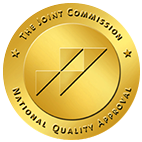
How to Quit Drinking
Alcohol is omnipresent in American society. This can make quitting drinking seem impossible. However, it is possible to quit drinking without resorting to social isolation. We’ll give you some tips on how to quit drinking.




The Prevalence of Alcohol
In a survey of individuals aged 12 or over, over 50% (almost 140 million individuals) reported consuming alcohol in 2019 within the last month.¹ Over 85% of individuals who were 18 or over reported drinking alcohol in their life at some point.²
Not only is alcohol widely consumed, but it’s also often considered the norm in social settings. Because of this, knowing when there’s an alcohol abuse problem and how to quit drinking can be challenging.
Health Benefits of Quitting Drinking
Drinking heavily can take a significant toll on several health aspects, increasing a person’s risk of³:
- Anxiety
- Alcoholic hepatitis
- Dementia
- Arrhythmia (irregular heartbeat)
- Fibrosis
- Depression
- Hearing loss
- Digestive issues
- Cancer
- Cirrhosis
- Stroke
- High blood pressure
- Sexually transmitted disease
- Pancreatitis
As the alcohol starts to leave a person’s system and that person begins establishing healthier habits, they’ll start to feel better.
According to research, some of the damage to the cardiovascular system, liver, gut, and brain will heal slowly after a person stops drinking.⁴ Once they get past the temporary alcohol withdrawal symptoms, they’ll begin noticing improvements in their mental and physical health. Some health benefits individuals can start to experience include:
Better-Looking Skin
Excessive alcohol use can have adverse effects on the skin, such as:
- Inflammation
- Dry skin from dehydration
- Broken capillaries on the nose and face
- Reduced collagen levels that result in saggy, loose skin
- Jaundice (with long-term, chronic use)
Drinking alcohol heavily has also been associated with an inflammatory skin disease called psoriasis. When an individual stops drinking, their body slowly begins to restore elasticity to the skin. In addition, the yellowing and redness around their eyes fade gradually.⁵
Healthier Weight
Alcohol derails the metabolism and depletes the body of essential nutrients.⁶ It’s also filled with empty calories and sugar. If a person binge drinks, they can easily consume 600 or more calories in alcoholic beverages in one night.
Binge drinking is defined by the National Institute on Alcoholism and Alcohol Abuse as a pattern of alcohol consumption that leads to 0.08 g/dLi blood alcohol concentration (BAC) levels. Generally, for men, this occurs after drinking five or more alcoholic beverages, and four or more for women.⁷
A huge part of recovering from alcohol isn’t just learning how to quit drinking alcohol. It also includes living a healthier lifestyle with the right amount of exercise and nutrition.
Improved Sleep
There’s a close link between poor sleep and alcohol use.⁸ This is due to alcohol interferes with a person’s sleep-wake cycle. This makes it harder for them to fall and stay asleep. Alcohol use also relaxes the throat muscle, which makes a person more susceptible to snoring and sleep apnea.
An individual can expect some sleep-related problems during their early recovery. However, the longer they stay away from alcohol, the more improvement they’ll experience in their sleep quality.
Signs a Person May be Dependent on Alcohol
If alcohol abuse is suspected, it’s essential to know what to look for. Consuming alcohol casually is a common thing. Therefore problem drinking can often be overlooked by loved ones or the person drinking.
Alcohol abuse can be written off as people partying or just having a good time. However, if they’re truly an alcoholic, their drinking will sometimes go from “having fun” to becoming an obsession and daily need.
Some signs to look for if alcohol abuse is suspected include:
Drinking more than planned on more than one occasion
Trying to cut down on the amount of alcohol on a single occasion unsuccessfully
Trying to quit drinking for a certain length of time (i.e., one week, a couple of weeks, a month) but being unsuccessful
Finding oneself hungover or sick after drinking
Spending a substantial amount of time drinking
Planning activities around drinking
Experiencing strong cravings or desire for alcohol
Letting responsibilities go due to drinking (i.e., work, school, family)
Experiencing legal problems as a result of drinking
Continuing to drink despite issues with loved ones, family, friends, work, school
Reduced time spent with friends or family to drink
Decreased or stopped time spent on activities or hobbies once enjoyed
Hiding the amount of alcohol being consumed or isolating oneself while drinking so others won’t notice the amount of alcohol being consumed
Lying about drinking
Having to consume more alcohol to experience the same effect
Compromising one’s ethics and values or finding oneself engaging in risk-taking behaviors while drinking
Experiencing periods where the person can’t remember what they did or where they were while drinking or experiencing blackouts
If any of these signs above are noticed, there is a good chance the individual has a problem with alcohol. It can be painful to live this way, but fortunately, hope and help are available. Many individuals have been able to find support and treatment and can now live happy lives in recovery.
Symptoms of Alcohol Withdrawal
Quitting drinking can cause alcohol withdrawal in some individuals. Some symptoms of alcohol withdrawal include:
Short-Term Effects
Even if a person hasn’t been a heavy drinker, they can still potentially experience some short-term effects when they stop drinking.
Some individuals may feel:
- Shakiness
- Fatigue
- Irritability
- Poor concentration
- Difficulty sleeping
- Bad dreams
Individuals could experience these symptoms even if they used to drink at pretty low levels if they were regularly drinking. For most individuals, these symptoms pass pretty quickly. They may be a temporary irritation they go through before they begin feeling the benefits of quitting drinking.
Physical Symptoms
Most individuals who stop drinking don’t have any physical symptoms. But, if they are alcohol dependent or drink heavily, going “cold turkey,” can cause severe alcohol withdrawal symptoms.
Some physical withdrawal symptoms may include:
- Sweating
- Trembling hands
- Nausea
- Vomiting
- Lack of appetite
- Palpitations
Severe cases may cause symptoms like fever, convulsions, and even hallucinations.
This is why individuals with an alcohol dependency should consult with a trained and knowledgeable professional before quitting drinking.
A healthcare professional can prescribe medication to help ease the withdrawal symptoms. Or they will typically refer the person to a substance abuse specialist. They may arrange psychological support and counseling and recommend local support groups.
Consequences of Drinking
Using alcohol excessively has immediate effects that can increase a person’s risk of many hazardous health conditions. Binge drinking can often result in⁹:
- Injuries such as falls, burns, motor vehicle crashes, and drownings
- Alcohol poisoning (high blood alcohol levels that require emergency medical assistance)
- Violence, including sexual assault, suicide, homicide, and intimate partner violence
- Risky sexual behaviors including sex with multiple partners or unprotected sex. These behaviors can lead to sexually transmitted diseases, which include HIV, or unintended pregnancy.
- Stillbirth and miscarriage or fetal alcohol spectrum disorders in pregnant women
Over time, drinking alcohol excessively can result in chronic disease development or other serious issues.
Tips for Quitting Drinking
When a person makes a conscious decision to quit consuming alcohol, it involves them having to make some significant life changes. Suppose the hobbies and social activities they frequently participate in typically center around or involve alcohol. In that case, they will have to stop participating or substitute them with other activities that don’t include alcohol. Giving up alcohol is a process that requires a person to take intentional actions to eliminate it from their life.
Some tips for quitting drinking include:
1. Know Your Why
The individual decided to quit drinking for a reason. They should write this reason down and refer to it often. Whether the cause is better health, improved relationships, or even weight loss, having a person’s “why” nearby may increase their motivation.
2. Have a Plan
Announcing the goal of quitting drinking isn’t enough. The individual should have a plan and write down the steps they’re going to take to accomplish this goal. This goal should include information such as what day they will stop and what they will do if they relapse.
3. Learn About Detox
It’s essential that a person knows that if they are a heavy drinker, their body will likely go through detox when they quit.
They may feel some of the following symptoms:
- Grumpiness
- Restlessness
- Anxiousness
- Sweatiness
- Headaches
These are all typical symptoms that will generally pass within five to seven days. They’ll need to keep their healthcare professionals in the loop. People should consult with a professional if they experience severe symptoms like confusion, visions, or high blood pressure.
4. Keep the Positives in Mind
When a person cuts alcohol out of their life they will likely experience many benefits. These benefits may include better sleep, have clearer skin, and they may experience a boost in their overall mood. Some individuals will lose weight. It’s essential these wins, no matter how small, are celebrated.
5. Follow a Guideline
Setting a daily limit may be helpful for people trying to cut back on their drinking. The Dietary Guidelines for Americans through the federal government recommend not drinking alcohol. However, they suggest that if an individual does drink, then men should keep it under two alcoholic beverages a day, and women should only have one.¹⁰
6. Identify Triggers
Drinking alcohol is often tied to people, places, and events. Being around them can make it more difficult for a person to stick to their plan of quitting drinking. It’s best to avoid these triggers if at all possible.
If it’s impossible, the individual should admit their desire to drink and not judge themselves for it. Then they should text or call a friend for support and accountability. They should also have their goals nearby to remind themselves why they stopped drinking.
7. Share Goals
Individuals who are trying to stop drinking should tell their trusted friends and family about their plan to quit drinking. Making loved ones or close friends aware of this goal will help remind them not to offer drinks. Spending time with nondrinkers can help, too, as they can provide additional support.
8. Find New Hobbies
Drinking alcohol is frequently the focus of many social activities. If a person is having difficulties doing the same things they used to, they’ll want to try new hobbies to fill their time.
For instance, they can:
- Learn a new skill
- Join the gym
- Find sober social groups
9. Keep Going
It takes time and effort to change habits. If an individual who is trying to quit drinking happens to slip up on their goal, they should not give up. They should start over the following day, don’t judge themselves, and just move forward.
Resources to Help Quit Drinking
There are several resources available for individuals who are struggling to overcome alcohol addiction. Alcohol abuse touches not only the person drinking, but their loved ones as well. Therefore, there are many resources available to people in recovery and their loved ones.
A few of these resources include:
Alcoholics Anonymous (AA)
Alcoholics Anonymous (AA) is a program run by people recovering from an alcohol use disorder (AUD). This program teaches individuals how to become and stay sober long-term. The 12 traditions and 12 steps of AA serve as the organization’s foundation and offer encouragement throughout recovery. There are AA programs all over the U.S. and internationally, and they’re open to any recovering alcoholic and their loved ones.
Al-Anon and Alateen
Al-Anon and Alateen are designed for the alcoholic’s family and friends. They are ideal resources for family and friends to learn how to cope with a loved one’s drinking behavior. People can attend meetings online, in person, or on the phone to talk about the situations they’re presently facing. They’re advised how to support a loved one and encouraged to seek treatment.
SMART Recovery
SMART Recovery is a type of support group for individuals who struggle with varying kinds of addiction. Individuals can access in-person meetings worldwide. And they have access to digital resources like daily online meetings, a message board, and a 24/7 chat room.
The 4-Point Program of the organization empowers individuals to overcome alcoholism. While also providing them with the tools to live a balanced life and teaching them how to stay sober.
Treatments For People Who Want to Quit Drinking
If a person with alcohol use disorder is struggling to quit drinking on their own, or is experiencing withdrawal symptoms after stopping drinking, their best option may be to attend an alcohol rehab. Because there isn’t a one-size-fits-all program for recovery, treatment is tailored to fit the individual’s needs.
Finding the best fit in a program means the program will address all aspects. Which includes alcohol use, any legal, social, or employment problems, and co-occurring behavioral health illnesses. Effective treatment programs will incorporate medication and behavioral therapy as required and routinely evaluate the plan to make any needed adjustments.
Treatment usually includes:
1. Detox
Treatment generally begins with alcohol detox. This is where the individual will be provided with a medication taper to help ease withdrawal symptoms. This medication taper is given to the individual to keep them comfortable and safe as they withdraw from alcohol. It doesn’t address any associated underlying triggers or the addiction itself. Therefore long-term alcohol rehab is recommended.
2. Residential Treatment
Residential treatment centers are live-in healthcare centers that offer 24-hour care from trained and licensed clinical staff. Most treatment centers are designed to resemble homes to help make individuals feel like they’re “home away from home.” This helps to eliminate the sterile office space setting and helps to create a more comfortable, warmer environment conducive to recovery.
3. Outpatient Treatment
Outpatient treatment is a common and effective way to treat AUD. With outpatient treatment, people have the chance to obtain the help they need for their alcohol use disorder. Outpatient treatment allows people to seek treatment without it disrupting their day-to-day responsibilities.
While every outpatient program provides a variety of services, many provide:
- Alcohol counseling sessions
- Medication-assisted Treatment (like Naloxone or Vivotrol)
- Support groups
- Different types of therapies
A comprehensive treatment program is designed to treat the whole individual, not just the disease. This gives the individual the best chance of overcoming triggers and staying sober for the long term.
4. Aftercare
Recovery doesn’t end when the individual reaches the treatment program’s termination phase. For the individual to experience long-lasting results of sobriety, people can participate in aftercare programs. These voluntary alumni programs provide individuals with continued support from peers, counselors, and other alumni. Social and environmental factors are crucial components of long-term recovery.
If an individual realizes they have a problem with alcohol, it’s essential to act now. To delay the process would be to prolong the suffering, which can potentially result in more severe health problems. Regardless of the present situation and how hopeless and desperate a person may feel, there is help available.
References
- Substance Abuse and Behavioral Health Services Administration. Key Substance Use and Behavioral Health Indicators in the United States: Results from the 2019 National Survey on Drug Use and Health. Retrieved on Aug 15, 2022 from https://www.samhsa.gov/data/sites/default/files/reports/rpt29393/2019NSDUHFFRPDFWHTML/2019NSDUHFFR1PDFW090120.pdf
- National Institute on Alcohol Abuse and Alcoholism. Alcohol Use in the United States. Retrieved on August 15, 2022 from https://www.niaaa.nih.gov/publications/brochures-and-fact-sheets/alcohol-facts-and-statistics
- National Institute on Alcohol Abuse and Alcoholism. Alcohol’s Effects on the Body. Retrieved on August 15, 2022 from https://www.niaaa.nih.gov/alcohols-effects-health/alcohols-effects-body
- Alcohol Research Current Reviews. Natural Recovery by the Liver and Other Organs After Chronic Alcohol Use. Paul G. Thomes,1,2 Karuna Rasineni,1,2 Viswanathan Saraswathi,2,3 Kusum K. Kharbanda,1,2 Dahn L. Clemens,4,5 Sarah A. Sweeney,1,2 Jacy L. Kubik,1,2 Terrence M. Donohue, Jr.,1,2 and Carol A. Casey1,2. 8 April 2021 from https://arcr.niaaa.nih.gov/volume/41/1/natural-recovery-liver-and-other-organs-after-chronic-alcohol-use
- British Journal of Dermatology. High prevalence of alcohol use disorders in patients with inflammatory skin diseases. K. Al-Jefri,D. Newbury-Birch,C.R. Muirhead,E. Gilvarry,V. Araújo-Soares,N.J. Reynolds,E. Kaner,P.J. Hampton. First published: 27 March 2017 from https://onlinelibrary.wiley.com/doi/10.1111/bjd.15497
- National Institute on Alcohol Abuse and Alcoholism. Relationships Between Nutrition, Alcohol Use, and Liver Disease. Charles S. Lieber, M.D., M.A.C.P. Retrieved on August 15, 2022 from https://pubs.niaaa.nih.gov/publications/arh27-3/220-231.htm
- National Institute on Alcohol Abuse and Alcoholism. Drinking Levels Defined. Retrieved on August 15, 2022 from https://www.niaaa.nih.gov/alcohol-health/overview-alcohol-consumption/moderate-binge-drinking#:~:text=Binge%20Drinking%3A,men%E2%80%94in%20about%202%20hours.
- Oxford Academic. Insomnia in Alcohol-Dependent Patients: Prevalence, Risk Factors and Acamprosate Effect: An Individual Patient Data Meta-Analysis. Pascal Perney, Philippe Lehert. Alcohol and Alcoholism, Volume 53, Issue 5, September 2018, Pages 611–618, from https://academic.oup.com/alcalc/article/53/5/611/4956705?login=false
- Centers for Disease Control and Prevention. Alcohol Use and Your Health. Retrieved on August 15, 2022 from https://www.cdc.gov/alcohol/fact-sheets/alcohol-use.htm
- Dietary Guidelines for Americans, 2020-2025 and Online Materials. Retrieved on August 15, 2022 from https://www.dietaryguidelines.gov/resources/2020-2025-dietary-guidelines-online-materials
TAKE THE FIRST STEP
From all of us at New Method Wellness co-occurring treatment center, we wish you peace and serenity in knowing that you or your loved one will get the necessary help.
ACCREDITED BY:

